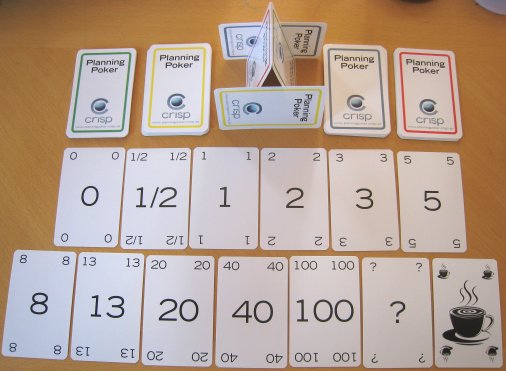
In my last post, I discussed the creation of Agile user stories. This time I’m going to talk about what to do with them once you have them. There are two big steps that need to be completed in order to move from user story creation to development: effort estimation and prioritization. Each poses its own problems.
Estimating Effort
Because Agile development relies on flexibility and adaptation, creating a bottom-up effort estimation analysis is both difficult and impractical. You don’t want to spend valuable time analyzing a piece of functionality up front only to have the implementation details change because of something that happens earlier in the development process, be it a change in another story, customer feedback, etc. Instead, it’s better to rely on your development team’s expertise and come up with top-down estimates that are accurate enough to get the development process started. This may at times make you feel uncomfortable, as if you’re looking for groundwater with a stick (it’s called dowsing, by the way), but in reality it’s about doing the minimum work necessary to come up with a reasonably accurate projection.
Estimation methods vary, but the key is to discuss story size in relative terms rather than assigning a number of hours of development time. Some teams find a story that is easy to estimate and calibrate all other stories relative to it, using some sort of relative “story points” scale (powers of 2, the Fibonacci sequence, etc.). Others create a relative scale and tag each story with a value from it: this can be anything from vehicles (this story is a car, this one is an aircraft carrier, etc.), to t-shirt sizes, to anything that is intuitive to the team. Another method is planning poker: the team picks a set of sizing values, and each member of the team assigns one of those values to each story by holding up a card with the value on it; if there’s significant variation, the team discusses the estimates and comes up with a compromise. What matters is not the method, but that the entire team participate in the estimation discussion for each story.
Learn more about Agile estimation here and here.
Prioritizing User Stories
The other piece of information we need in order to begin scheduling is the importance of each story, and for that we must turn to the business side of the organization. Prioritization in Agile is an ongoing process (as opposed to a one-time ranking) that allows the team to understand which user stories carry the biggest payoff at any point in the process. Once they are created, all user stories go into a the product backlog, and each time the team plans a new sprint it picks stories off the top of the list until their capacity is exhausted, so it is very important that the Product Owner maintain a properly ordered backlog.
As with estimation, methods vary, but the key is to follow a process that evaluates each story on the value it adds to the product at any point. If I just rank the stories numerically, that does not provide any clarity as to why that is, which will be confusing to the team (and to me as well as the backlog grows). Most teams adopt a ranking system that scores each story individually; here’s a good example. This method uses two separate criteria: urgency and business value. Business value measures the positive impact of a given story on users. Urgency provides information about how important it is to complete a story earlier rather than later in the development process, taking into account dependencies between user stories, contractual obligations, complexity, etc. Basically, Business Value represents the importance of including a story in the finished product, and Urgency tells us how much it matters when that story is developed (understanding that a story’s likelihood of being completed decreases the later in the process it is slotted). Once the stories have been evaluated along the two axes (a simple 1-5 scale can be used for each) an overall priority number is obtained by multiplying the two values, which gives us the final priority score. The backlog is then ordered using this value.
As the example in the link shows, a Product Owner can also create priority bands that describe stories at a high level: must-have, nice to have, won’t develop, etc. This provides context for the priority score and gives the team information about the PO’s expectations for each story.
I’ll be back next month to talk about building an Agile culture. In the meantime, what methods does your team use to estimate and prioritize user stories?
Andromeda
I love these cards 🙂
A P.S. to anyone who’s digging this series – the LITA Education committee is trying to set up a web course on project management (from an agile perspective) this fall. Nothing definite yet, but keep your eyes open 🙂
Ethan Fenichel (@EthanDF)
When I was doing agile development, and was a project owner, the hard part was always going from nothing to something that could be incrementally improved through user stories. The first few sprints were always difficult because prioritizing the different components that lead to the minimally viable product (MVP) is difficult from a business value. I always felt like agile was easier from a business perspective when it was used to enhance an existing product. Do you have any thoughts on this?
An example might be building a loader to clean and load vendor records while creating workflow for exceptions, generating reports, and recording metrics. Clearly, the exceptions, cleaning, reports, and metrics might be downstream stories, but the action of loading could end up being one very large story (depending). I suppose this is a case where the business side really does have to yield to the implementation team?
Pingback: Agile Development: Tracking Progress | LITA Blog